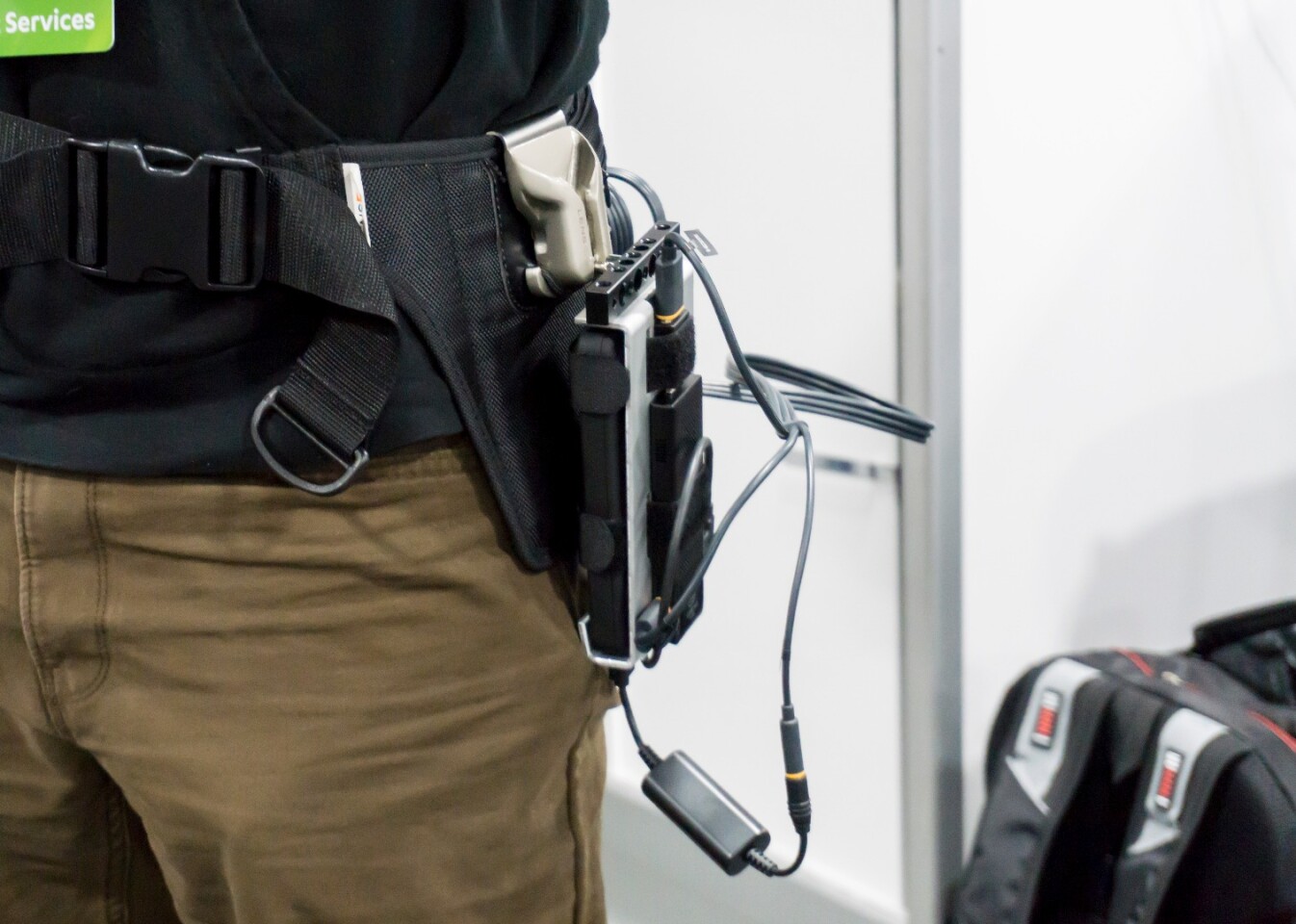While VR is prevalent at CES 2017, we haven't seen much tech this year that pushes the emerging space forward. One of the few exceptions is KwikVR, an adapter that takes wired, PC-based headsets like the HTC Vive and Oculus Rift and makes them wireless. New Atlas took KwikVR for a spin.
One of the drawbacks of today's high-end VR is the long cord you have snaking down from your headset. Especially in fast-paced, first-person action games, the cord is a tangle or trip waiting to happen.
When I walked into Scalable Graphics' CES booth and put on a KwikVR-capable Vive, that all changed. There is still a cord coming from the headset, but it's only connected to a wireless device (about the size of a paperbook book) strapped to your waist. There's nothing dangling around your feet, physically connecting you to the gaming PC that's powering your experience.
I didn't notice a single tracking glitch and saw no obvious latency (the company says it's guaranteed to be less than 12 ms) during my roughly five-minute demo with KwikVR on a Vive. It was the familiar Vive experience, only without any cords following behind me.

The setup requires a software installation on your PC, along with an HDMI dongle that plugs into the PC's graphics card and a 5 GHz Wi-Fi router connection. CEO Xavier Cavin says placing the dongle on your belt, rather than head, eliminates any wave-based safety concerns.
While our demo had the waist-based dongle hanging inside a large belt, Cavin tells us that the final version will instead include a belt clip for attaching the device directly to your own belt or pants.
The company says the final version of the dongle will weigh about a pound, and includes a 16,100 mAh battery – estimated for up to four hours of wireless-VR playtime. It supports the native resolution and frame-rate for both the Rift and Vive.

With at least three competing wireless VR adapters on display at CES (including TPCast that HTC is showcasing at the Vive booth), 2017 looks to be the year that high-end VR goes untethered. KwikVR is scheduled to go on sale early this year for around US$300.
Product page: KwikVR






